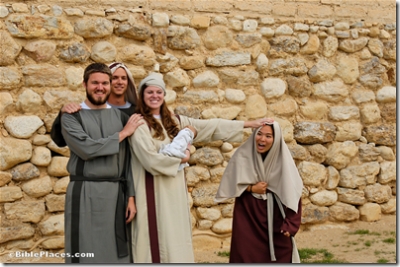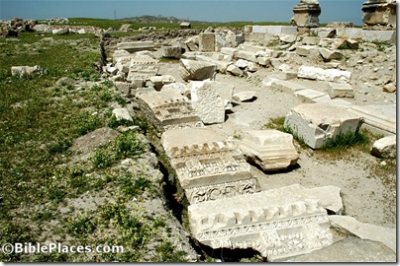The movie has aired, but as far as I can tell, the theory has gained absolutely no traction. It is astonishing to me to see such unanimity among scholars who otherwise hardly agree about anything.
But this claim is just too bizarre, even if you reject the idea that Jesus rose from the dead.
Jodi Magness has a good article on the subject at the SBL Forum. She concludes,
To conclude, the identification of the Talpiyot tomb as the tomb of Jesus and his family contradicts the canonical Gospel accounts of the death and burial of Jesus and the earliest Christian traditions about Jesus. This claim is also inconsistent with all of the available information — historical and archaeological — about how Jews in the time of Jesus buried their dead, and specifically the evidence we have about poor, non-Judean families like that of Jesus. It is a sensationalistic claim without any scientific basis or support. (Emphasis added)
Joe Zias, who knows more about the dead and burials than everyone involved in the movie combined, has prepared a “Viewer’s Guide” to the movie. Among other things, he makes this interesting comment:
The truth of the matter is that the missing ossuary was never missing, never stolen from the IAA, nor stolen from the Talpiot tomb. Plain ossuaries which bore no inscription, nor any ornaments were automatically placed in an inner courtyard in the Rockefeller Museum during my tenure at curator (1972-1997). Due to a lack of storage space this was standard operating procedure, the ossuary was given a registration number, measured and simply stored in the inner courtyard with perhaps an additional 50-100 plain ossuaries. This was personally explained to Tabor by me so as to avoid any problems of a conspiracy theory in which the plain ossuary would figure. Unfortunately, it did not fit their agenda so they artificially created a story in which a plain white ossuary, suddenly morphed into a ossuary with two rosettes on the front, traces of red paint, bearing the inscription on the back ‘James son of Joseph, brother of Jesus. (Emphasis added)
Jim West comments on the movie piece by piece and concludes,
If you are willing to accept a very long chain of unsupported suppositions you may well be convinced by the film. If you can accept a confluence of disconnected factoids as determinative, Jacobovici may have proven his case to you. Personally, I require a bit more than mere supposition and that, Jacobovici cannot, and does not, offer. More than amused, I come away annoyed simply because many without any proper understanding of method may be duped by the film. Don’t be tricked by the fast and loose way that “statistics” are handled in this film. Statistics, after all, cannot be determinative of truth or fact. They can only, if rightly used, demonstrate potential trends. In this case, statistics prove nothing. (Emphasis added)
Craig Blomberg has written a response in which he says:
Or take a more chronologically relevant example. Scholars have long known about (and tourists can still visit) the tomb in Bethany where inscriptions were discovered referring to Mary, Martha and Lazarus (and others). But every scholar worth his or her salt, no matter how conservative, acknowledges that those names were just so common that even to find them together in one tomb in the very town that the Bible says the three New Testament characters by those names lived proves statistically insignificant. It’s entirely possible that it happened completely by chance. There may easily have been a whole bunch families in Bethany with lots of children, including three with those names, in an age when parents had as many children as they could in hopes that a few might survive to care for them, if necessary, in their old age.
The same approach must be taken with the cluster of names in the Talpiot tomb. In fact, Bauckham’s tables extracted from Ilan’s monumental reference work add one very interesting footnote. The Hebrew woman’s name listed as ninth most common (actually tied for eighth with Imma) was Mara, like the form announced to have been found with the second Mary in the Talpiot tomb. Not only does Mara not mean Magdalene but, although it could be the Grecized feminine equivalent to the Aramaic masculine mar or “master,” it actually appears on one ossuary, discovered elsewhere in Israel much longer ago, as an alternate form of the name Martha. And the feminine form of “master,” in a highly patriarchal culture, was not used nearly as often as the masculine form. So the “Mary” that may have been a spouse to this Joshua/Jesus more likely was named Mary Martha, not Mary Magdalene, and not Mary the Master.
Joe D’Mello questions some assumptions made in the statistical analysis and arrives at a very different conclusion!
We see that P(A and B) = (1/10) * (599/600) = 0.1 (approximately). This immediately slashes the probability of the discovered tomb being that of the Jesus family down to 0.1 or 10%. In other words, there is then only a 10% chance that the discovered tomb belongs to the Jesus family – a number not likely to draw a runaway TV audience for Cameron!
In short, it would have been quite easy to have run this theory past scholars to find out if it really held water or not. But a better way, if you’re interested in generating a media storm, is to keep the matter secret and require all involved to sign non-disclosure agreements. Maximum press exposure is guaranteed before journalists know that essentially all archaeologists, biblical scholars, and statisticians think it’s a bunch of hooey.

